Everything has a cause, and everything is fate.
Where does the dream of Hefei’s proclamation to be the capital of China’s new energy vehicles come from? Certainly not April 29, 2021, when the Hefei New Airport Intelligent Electric Vehicle Industry Park started construction with ambitious plans: a total area of 16,950 acres, an initial investment of 50 billion RMB, a planned annual production capacity of 1 million vehicles, and an annual battery capacity of 100 GWh, with an expected total annual output value of 500 billion RMB…
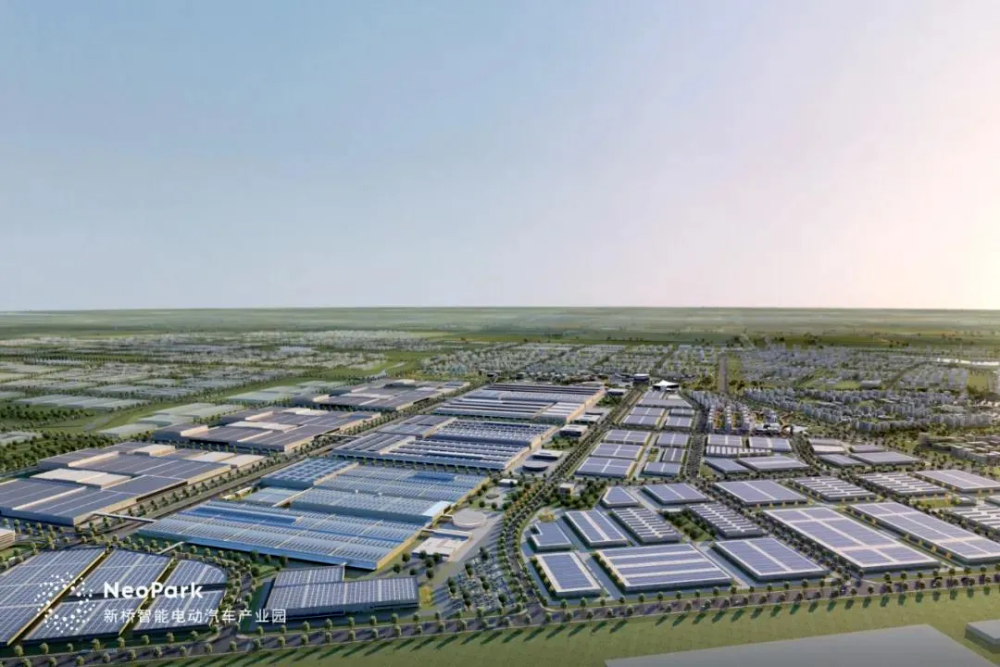
Perhaps it was earlier. Was it the end of April 2020? At that time, the then-secretary of the Hefei Municipal Committee, Song Guoquan, had only a few days left before he was transferred to a new position, but he still signed and approved an investment in Nio, saving Nio from the brink of death.
Maybe it was October 30, 2015, when Premier Li Keqiang told Andreas Renschler, “I want to be a mediator” and proposed that Volkswagen and Jianghuai cooperate.
Maybe it goes back more than a decade. In 2002, Jianghuai’s Xia Shunli used lead-acid batteries to manufacture an electric minibus.
Perhaps it goes back even further. In the 1990s, Zhao Han, a professor at Hefei University of Technology, tinkered with fuel vehicles and converted them into electric vehicles on campus…
There is no starting point that everyone can agree on, but everyone agrees that Hefei is on the forefront today, launching an assault on becoming the capital of new energy vehicles, and condensing the efforts of at least two or three decades of Hefei’s new energy vehicle pioneers.
In early May, Electric Vehicle Observer went to Hefei and interviewed experienced political, business, and academic figures in the new energy vehicle industry, learning about Hefei’s past, as well as looking forward to its future.
Hefei’s ambitions go beyond just being the capital of new energy vehicles.
Origin from Hefei University of Technology
In China’s automotive industry, Hefei University of Technology (referred to as Hefei University) has produced many talented individuals, earning it the nickname “Fat University Series” among internet users. Members of the “Fat University Series” are spread across various automobile companies, including many leaders.
When tracing the origins of Hefei’s new energy vehicle industry, it’s impossible to ignore Hefei University.
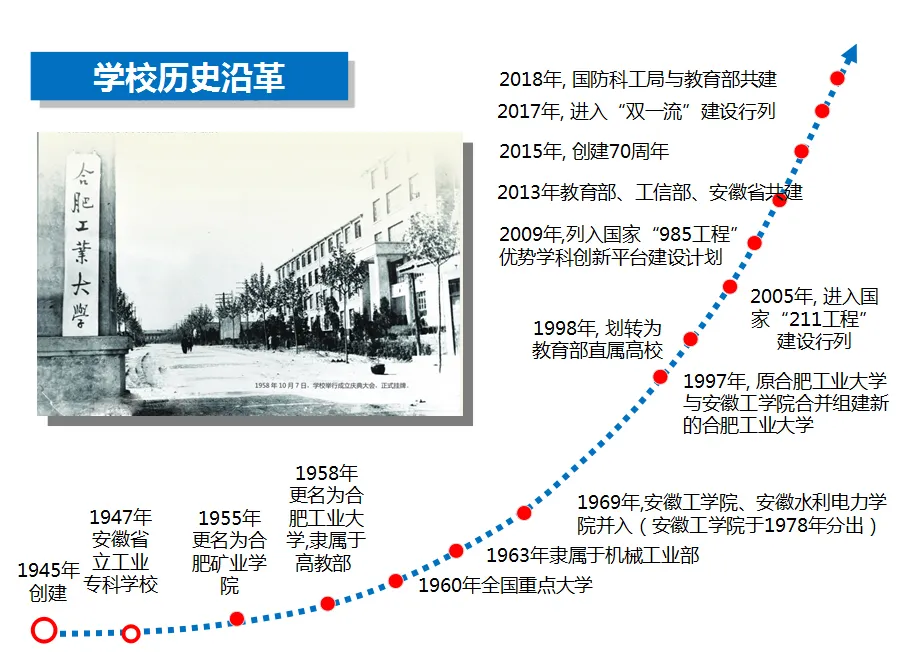
Zhao Han, who independently researched electric vehicles, later became the dean of the School of Mechanical and Automotive Engineering at Hefei University and the vice president of Hefei University, as well as the vice chairman of the Anhui Political Consultative Conference. He helped Hefei and Anhui to determine the main direction of electric vehicle development at an early stage. Since then, waves of Hefei University faculty and students have continued research and development in energy-saving and new energy vehicle technologies, producing impressive results.- 1999: The University of Science and Technology of China (USTC) developed the first generation of pure electric vehicles.
- 2001: USTC and Chery jointly undertook the national 863 project to develop hybrid electric vehicles.
- 2004: USTC successfully developed the second generation of pure electric vehicles.
- 2006: USTC and Ankai jointly developed fuel cell hybrid ultracapacitor city buses.
- 2007, 2008: USTC collaborated with Hefei Forging Group and Hefei Guoxuan High-Tech Power Energy Co. to jointly develop high-performance pure electric vehicles.
During this period, similar to the entire China, USTC was doing research and development in new energy vehicles.
By 2009, Hefei had successfully applied for and launched the demonstration operation of one thousand new energy vehicles in ten cities in China. USTC’s research achievements began to enter the market, opening the second phase of research and development.
In September 2009, USTC partnered with JAC and Jiuyi Automation to establish the New Energy Automotive Engineering Research Institute. At that time, Anjin, the former President of JAC, served as the dean, and USTC Vice President Li Gang, JAC Deputy General Manager Yan Gang, and Jiuyi Automation General Manager Lin Juguang served as vice deans.
In 2010, Pan Yishan joined the New Energy Automotive Engineering Research Institute as Vice Dean. He recalled the process of USTC’s participation in the industrialization of new energy vehicles in Hefei.
” For almost half a year, I drove with a group of teachers to JAC’s technical center to work.” Pan Yishan said. There were six people in a RuiFeng business car.
JAC had already decided to develop electric vehicles, but its motor and electrical control capabilities were relatively weak, and it wanted to rely on USTC for development.
USTC’s technological accumulation played a huge role. With the help of the New Energy Automotive Engineering Research Institute, JAC developed new motor and electrical control systems. In 2011, the 100 sets of motor and electrical control systems developed by them for the JAC Tongyue electric vehicle created the record of the longest distance traveled without failure at the time.
Later, the New Energy Automotive Engineering Institute and JAC jointly developed the next three generations of nearly 5,000 iEV electric vehicles and participated in the pilot phase of private purchases of pure electric vehicles in Hefei. “We bought 30 iEVs for each generation,” said Pan Yishan.
During the process of industrializing scientific research with JAC and other companies, USTC also incubated some enterprises, including JuYi Power, a motor and electrical control company founded by Lin Juguang, and Anhui Ruineng Technology Co., Ltd, focusing on BMS and founded by Liu Xintian.
In 2016, the USTC Automotive Engineering Technology Research Institute merged with the New Energy Automotive Engineering Research Institute. With the rollout of new energy vehicles across China, USTC Automotive Engineering Technology Research Institute also went out of Anhui to cooperate with other enterprises and institutions in developing new energy vehicles.As the automotive industry undergoes transformation and upgrading, the Automotive Engineering Technology Research Institute has entered the third stage, but what exactly this stage is will be discussed later.
Gathering at JAC Motors
Xia Shunli is also part of the “Feida System”. He graduated from graduate school of HEU in 1999, majoring in internal combustion engines.
After graduation, Xia Shunli joined JAC Motors, working on the development of internal combustion engines, “I was the main technical person responsible for the development of the Ruifeng engine. I figured out how to carry out the most difficult technology in engineering.” Xia Shunli said.
In 2002, while still working on internal combustion engine development, Xia Shunli received a task to develop an electric vehicle using lead-acid batteries. “I converted a minibus into an electric vehicle, which could run up to 100 kilometers, but it wasn’t that good at climbing hills.” This project was later discontinued.
Perhaps it was this experience that led to the establishment of the New Power Department of JAC Motors Research Institute at the end of 2006, and Xia Shunli became the head of this department.
In 2007 and 2008, Xia Shunli tried various energy-saving and new energy technologies. Hybrid technology was tested, but “the cost was too high, the brand did not support it, and it didn’t have much significance.” Mild hybrid technology was also tested, but the conclusion was not as fuel-efficient as expected.
Extended range technology was also tried, but “first, the noise was too loud, especially when the battery was depleted; second, the continuous acceleration and deceleration made it difficult to balance the power. In the end, we had to use a large engine.”
“All technologies were excluded one by one. In 2009, when Mr. Left made a decision, we would focus on developing electric vehicles right away.” Xia Shunli said.
“Mr. Xu returned in 2009; Dr. Zhou came back in 2010 and we started practicing together.”
“Mr. Xu” refers to Xu Xingwu, the Senior Vice President of Gotion High-Tech; “Dr. Zhou” is Zhou Peng, the founder of Huatiangroup. These two local companies in Hefei, one is doing battery cells and the other is doing battery pack. Along with JAC Motors, and “7 other companies”, a total of 10 companies worked together to make the technology mature, create a successful road and pull up the industry chain in Hefei.
Investing more than ten years in one sentence and not easy to describe the difficulties.
Xia Shunli inherited the rigorous process of engine development and applied it to electric vehicles, which demands the same standard. Safety is the most important element that causes him the most anxiety.
“The first priority for electric vehicles is the safety of the battery pack.” Xia Shunli said, “We started researching this topic in 2009.”
“When Mr. Xu returned, he told me that the battery was too scary, it could explode, and single cell energy could not be too large. Because if the energy is too large, the explosion could kill people, which is a terrible thing.” Xia Shunli and Xu Xingwu discussed that the single cell energy should not exceed 20 ampere-hours. “So, we persist in using small cylindrical batteries.”
Even with small cylindrical batteries, the safety of the battery pack, which is made up of battery modules composed of individual batteries, remains a challenge.
It must be acknowledged that thermal runaway of battery cells is a probability event. Xia Shunli and his team’s idea is, if the battery cell suffers from thermal runaway, the battery pack and the whole vehicle should not catch fire, which is an acceptable level of safety.“We went to Susong Road on the weekend, which is where the NIO car factory is now located. At that time, there was no one there, it was just wasteland. We used wires to heat up the battery cells and observed if the surrounding cells were affected after a single cell explosion.” Said by Xia Shunli, “At the time, there was no common testing standard for single-cell thermal runaway of battery packs. JAC developed its own testing standard which required that the entire battery pack must not undergo thermal runaway after 100 consecutive single-cell thermal runaway tests to pass.”
From the first to the fourth generation of JAC electric vehicles, they have always used lithium iron phosphate batteries. Lithium iron phosphate has inherent safety, coupled with passive safety designs of battery modules and packages, which makes their products relatively safer.
“In 2011, we launched more than 500 privately purchased electric vehicles, the largest scale at that time to prove that lithium iron phosphate is indeed safer. Time has proved it. My (first generation electric) car is still running and can still be driven.”
When JAC began developing its fifth-generation electric vehicles, long-range electric vehicles became the policy and market demand. Ternary batteries became a battery technology that the industry had to consider, and all experiments were conducted again.
“The probability of ternary battery thermal runaway cannot be absolutely eliminated.” JAC partnered with companies such as Lishen and Huaying to develop and conduct single-cell thermal runaway tests on battery formula, module, and package structure. By 2018, Xia Shunli believed that the problem had been completely resolved. In 2020, they officially named this battery scheme the “Honeycomb Battery.”
“We have conducted countless experiments for so many years, and now we have probably done 10,000 of them. The money each of us invested is probably around 1 billion yuan.” He said.
In 2018, Xia Shunli, who had long been in charge of technology, became the general manager of JAC New Energy, responsible for research and development, production, sales, and brand authorization from Volkswagen, and began to use the Sihao brand.
In September 2019, JAC launched the Sihao E20X; in March 2021, it launched the Sihao E40X and E10X, and plans to launch the Sihao E40A sedan.
JAC’s early exploration of new energy led the industry in China’s promotion of new energy vehicles.
In 2011, JAC targeted and purchased private electric vehicle trial, with a total of more than 500 units, becoming the largest scale in the country.
In 2012, the national sales volume of electric vehicles was 8,500 units, and JAC alone sold 1,422 units, with a market share of nearly 17%.
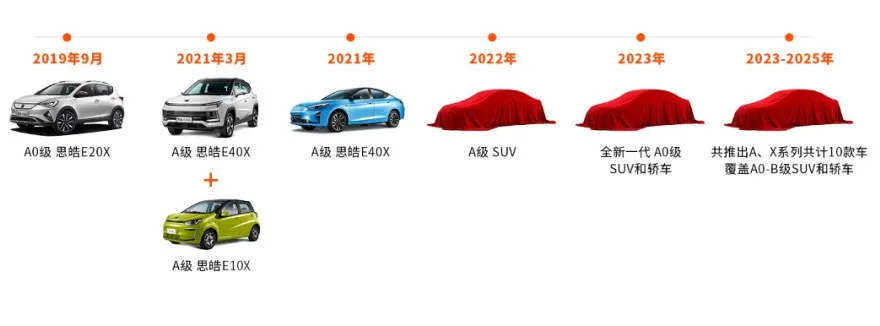 During the promotion phase from 2009 to 2012 in ten cities and from 2013 to 2015 across 88 cities nationwide, Jianghuai became one of the leading companies in new energy vehicles and helped Hefei become a star city in promoting new energy vehicles.
During the promotion phase from 2009 to 2012 in ten cities and from 2013 to 2015 across 88 cities nationwide, Jianghuai became one of the leading companies in new energy vehicles and helped Hefei become a star city in promoting new energy vehicles.
Glory of the “Dual Pilot Cities”
In the initial stage of promoting new energy vehicles, several directors across the country were well-known in the industry.
Xu of Science and Technology Commission was the director of the New Energy and New Material Division; He of Hangzhou’s Economic and Information Committee was the director of the Automobile Division; Lu of Shenzhen’s Development and Reform Commission was the director of the Major Project Coordination Division; Liu of Shanghai was the director of the Office of the Leading Group for the Advancement of New Energy Vehicles. The last one was Dai of Hefei’s Science and Technology Bureau, the director of the Regional and Innovative Division.
In 2006, Dai Bing transferred from the army to the Hefei Science and Technology Bureau. At the beginning, Dai had no fixed job responsibilities, “I was like a brick of the revolution, moved wherever I was needed.”
In 2009, Hefei decided to apply to become one of the “Ten Cities and Thousand Vehicles” pilot cities. The specific work for this fell on the shoulders of Dai Bing.
That year, Ankai Bus in Hefei heard that the country was initiating the “Ten Cities and Thousand Vehicles” demonstration project and wrote a letter to the Municipal Committee and Government, urging the government to take the lead in applying. Sun Jinlong, the then Secretary of the Municipal Committee, strongly supported this and instructed the Science and Technology Bureau to organize research on the national situation of new energy vehicles.
At that time, electric vehicles were certainly a novelty. Dai Bing knew that a teacher at Hefei University of Technology had developed an electric vehicle for use on campus and had undertaken a national research project with Jianghuai and Chery, but there were no actual applications in Hefei.
According to the instructions of the Municipal Party Secretary, Hefei’s research team set off the next day, visited Wuhan, Changsha, Zhuzhou and other places, and the precedents of several places made Hefei feel it was possible. The Science and Technology Bureau organized Hefei University of Technology, Ankai Bus, Guoxuan Hi-Tech and other units to formulate a promotion plan, which was fully endorsed by the national ministry after sufficient demonstration.
On January 23, 2010, at the launching ceremony of the demonstration operation of pure electric vehicles in Hefei, 30 pure electric buses were officially put into operation on Route 18. Cao Jianlin, the Vice Minister of Science and Technology at the time, was present and presented the Hefei Public Transport Group with the key to the pure electric bus, marking the opening of the first pure electric bus route in the country in Hefei.
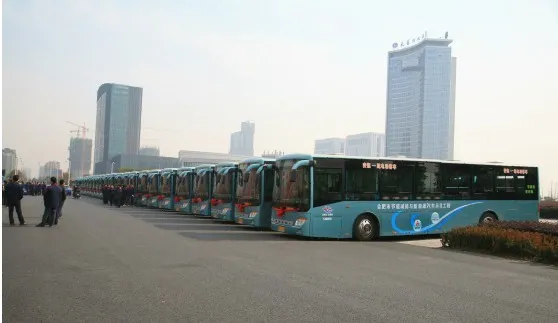
The first bus line in the country was certainly an honor, but the participants knew the difficulties of the operation. Guoxuan Hi-Tech built a charging station in 40 days in the cold winter months. However, the actual range of these buses was only over 150 kilometers, often half charged and half operated.
“There were also many problems with the vehicles. For example, the high-voltage switch was not up to standard… Once a problem occurred, we had to study it, which played a good role in the maturity of electric vehicles,” Dai Bing said.The four ministries in charge of new energy have launched a pilot program for private purchase subsidies of new energy vehicles shortly after the pure electric buses hit the road. For new energy vehicles that meet the support conditions, subsidies of RMB 3,000 / kWh will be granted. Plug-in hybrid passenger cars can be subsidized up to RMB 50,000 per vehicle, and pure electric passenger cars can be subsidized up to RMB 60,000 per vehicle.
JAC Motors is developing pure electric passenger cars and has a foundation for applying for the pilot program in Hefei. However, according to JAC’s progress, the speed of launching products is still relatively slow. Zhu Ce, who was the director of Hefei Science and Technology Bureau at that time, led a delegation to JAC Motors and convinced them to release the product half a year earlier, and decided to submit an application.
Hefei has successfully obtained the pilot program for private purchase of new energy vehicles and has become one of the six cities that have been awarded “dual pilot” nationwide.
On April 17, 2011, the Hefei Private Purchase of New Energy Vehicle Demonstration and Application Ceremony was held at the JAC Automobile Technology Center. Wan Gang, who was then the Minister of Science and Technology, attended the ceremony and gave guidance. That year, JAC Motors launched 585 Pure Electric Tong Yue sedans to the private car market, becoming the largest-scale demonstration and operation in the field of private purchase of new energy vehicles in China and even the world.
“The model was also designed,” Dai Bing recalled. “At the beginning, they wanted to directly launch a rental car and perfect the car through high-intensity operations. We think that the impact of taxis is too large, so we let their employees and suppliers try it internally first.” This is the so-called targeted purchase model. “We also followed the first batch of cars closely and solved almost 300 problems in about a year and a half. The improvement of these cars played a vital role.”
Hefei, which started off quickly, became a typical promotion city with Beijing, Shenzhen, Hangzhou, and Shanghai in multiple rounds of new energy vehicle promotion pilots.
The “Hefei Model” of promoting new energy vehicles that Dai Bing once summarized includes “unify, promote, support, and restrict.”
“Unify” includes unified thinking, unified command, and unified action. Since the promotion of new energy vehicles in Hefei, it has been supported by four leadership teams and has been continuously promoted. To this day, the leader of the Hefei new energy vehicle industry development leading group is still the mayor. In terms of policy, Hefei follows the central government’s rhythm, and corresponding policies have been implemented every stage, even every year, to continuously promote the promotion work in Hefei. For example, the promotion policy requires unified construction of charging infrastructure in residential communities, which was proposed earlier than the policies of the four ministries.
“Promote” is to promote positioning, investment, and output. Regarding investment, “the government has invested a lot of money in these years to provide real support. For example, pure electric buses are all financed by the government.”
“Support” is to support development, production, and promotion. “Restrict” means two-way constraint, gradual constraint, and effective constraint, that is, to effectively constrain products with rough quality and not to disrupt the market.## Introduction of Volkswagen
The “Hefei model” has been effective and has been among the top in the country in terms of promotion. In 2013, Hefei’s promotion of new energy vehicles accounted for 20% of the national total; in the first half of 2019, Hefei’s cumulative promotion exceeded 200,000 vehicles, accounting for approximately 5.86% of the national total.
Although the total number is increasing, the proportion does not match the glory of previous years. Due to various reasons, the two major leading companies, Ankai and Jianghuai, have not developed well in recent years, and it has been difficult for supporting parts companies to survive independently.
So, Hefei needs new strength.
In October 30th, 2015, Premier Li Keqiang returned to his hometown Anhui, China. In the morning, he visited Jianghuai and inspected the research and production of new energy vehicles. Accompanied by the then-Chairman An Jin, he sat in the driver’s seat of an electric vehicle, and inquired about the various parts of the vehicle.
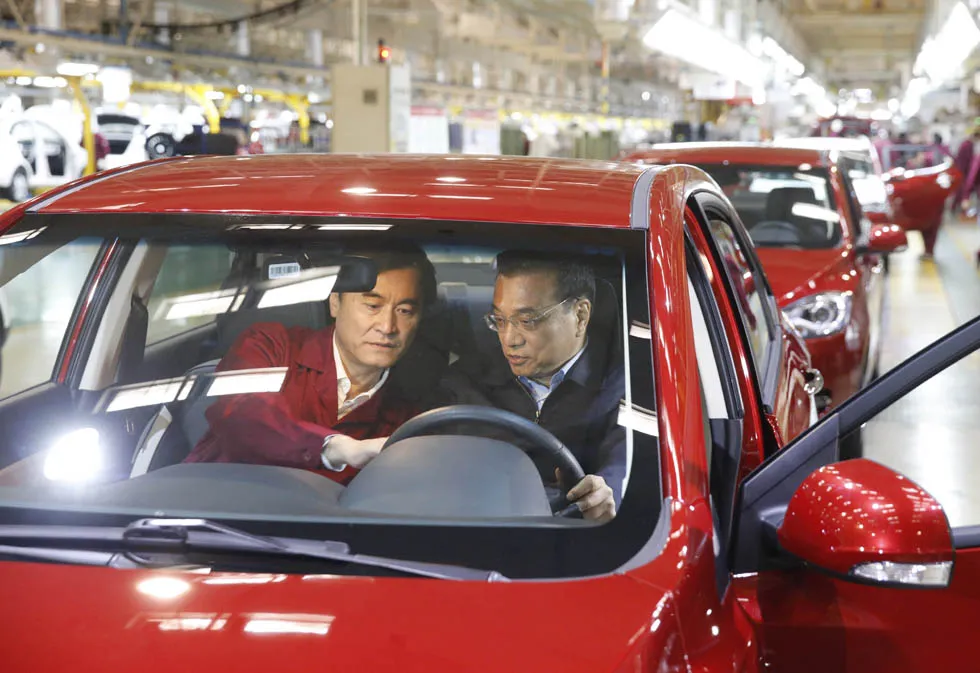
When communicating with Jianghuai employees, someone proposed that they hoped to cooperate with Volkswagen, and Li Keqiang gladly stated that he would help Jianghuai “make a match.” On the same day, he expressed this intention to the German delegation during the meeting.
The cooperation between Volkswagen and Jianghuai started at a high point, but the process was tortuous, and the outcome was unexpected.
At the time when Li Keqiang “made a match,” the cooperation model between domestic and foreign automobile companies was basically joint ventures. However, there was a tradition that foreign passenger car companies could only form joint ventures with two Chinese companies.
After lengthy negotiations between the two sides, on June 1, 2017, witnessed by Li Keqiang and Merkel, Jianghuai and Volkswagen officially signed a joint venture agreement and jointly established a joint venture with a 50% stake for developing, producing, and selling new energy vehicles and providing related mobile travel services.
On November 28, 2018, witnessed by Chinese President Xi Jinping and Spanish Prime Minister Pedro Sanchez, Volkswagen, Jianghuai, and SEAT signed a memorandum of understanding. The partners will jointly develop an electric vehicle platform for producing Jianghuai Volkswagen models. At the same time, Jianghuai Volkswagen will also introduce the SEAT brand before 2021.
As the joint venture was established and the vehicle models were ready, just when people thought that Jianghuai Volkswagen was once again a classic Sino-foreign joint venture case, China opened up the joint venture ownership limit for foreign investment, and Volkswagen continued to increase its investment in Hefei.
On May 29, 2020, Volkswagen acquired a 50% stake in JAC Holdings, with the Anhui Provincial State-owned Assets Supervision and Administration Commission holding the other 50% and still controlling JAC Holdings. Volkswagen China also increased its investment in the joint venture company Jianghuai Volkswagen and finally held a 75% stake.
In December of that year, Jianghuai Volkswagen was renamed Volkswagen (Anhui) Co., Ltd. Jianghuai Automobile became the main body of the two-way joint venture.This time, Volkswagen has shifted its focus in China to Hefei. Volkswagen Anhui has become Volkswagen Group’s major branch in China. In addition to acquiring a factory from JAC Motors, Volkswagen will invest more than 20 billion yuan to build a new MEB platform factory in Hefei with an annual production capacity of 300,000. According to its plan for the next seven years, the annual output will reach 350,000 to 400,000.
In addition, on May 29, 2020, Volkswagen signed a contract with Guoxuan High-Tech to invest about 1.1 billion euros to acquire 26.47% of Guoxuan High-Tech’s shares and become the largest shareholder.
This unprecedented investment by Volkswagen in Hefei aims to continue its dominant position in the Chinese market in the era of intelligent electric vehicles.
Investment in NIO
Compared with Volkswagen, NIO has been a source of pride for auto industry in Hefei for a longer time.
In May 2016, NIO and JAC Motors announced their cooperation to jointly build a world-class intelligent manufacturing factory with a high-end all-aluminum body production line-JAC NIO Advanced Manufacturing Base to produce NIO models.
This cooperation model, which NIO and JAC Motors call “co-manufacturing,” involves Jianghuai participating in the R&D. However, this model is still referred to as “OEM” by the industry, leading the industry trend.
Why did NIO choose JAC Motors?
According to William Li Bin, founder of NIO, he had talked with two joint venture brands and three Chinese brands when choosing the OEM partner back then. However, JAC Motors ultimately won for four reasons. Firstly, JAC Motors was determined to achieve innovation through this matter by using “Internet plus” strategy. Secondly, JAC Motors was willing to invest in building a new factory. Thirdly, Li Bin and the JAC Motors team trusted each other. Fourthly, he believed that JAC Motors was a company with enterprising, aggressive and prudent qualities.
An Jin, the former chairman of JAC Motors, who finalized the cooperation with NIO, said something similar.
He said to the media, “He told me that he wanted to make a car, how he wanted to do it, what methods he wanted to use, and what level he wanted to achieve. He persuaded me. I also told him, I can help you achieve this method. We trusted each other and came to an agreement.”
Li Bin is from Taihu County, Anhui, and the so-called trust may also have hometown factors.
The JAC NIO factory has lived up to expectations, producing the NIO ES8, ES6 and EC6. On April 7 this year, this factory produced the 100,000th mass-produced car since the first one on May 27, 2018, which achieved this record in the high-end SUV sub-market of the same price range in just 35 months.
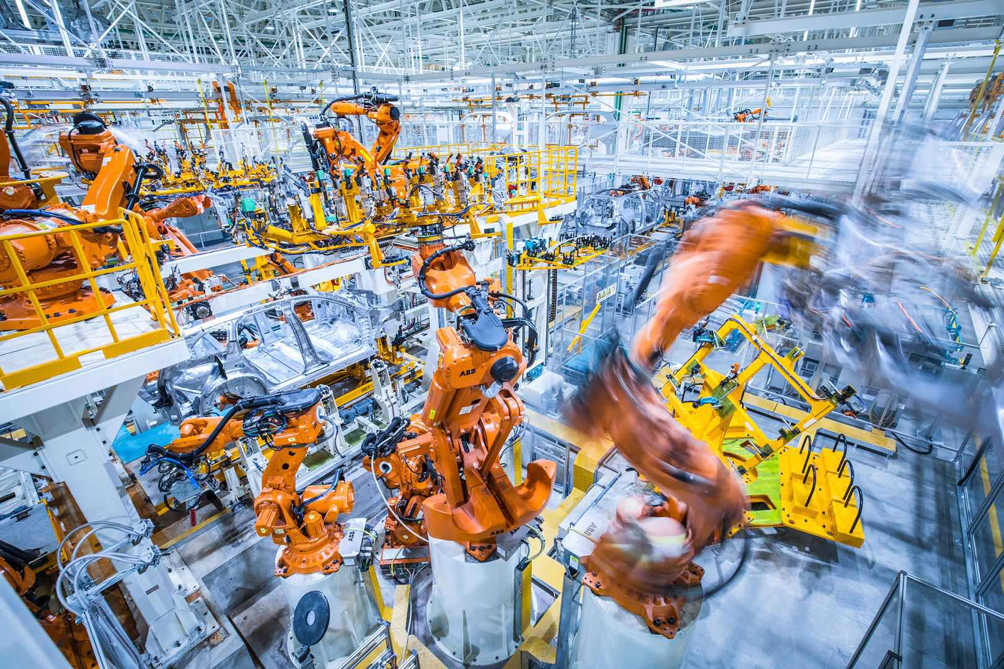 This process was not without difficulties, besides the early challenges. In the second half of 2019 to early 2020, NIO’s funding chain was almost broken. Although NIO obtained cash inflows by selling cars and increasing shares, in times of crisis, the investment framework agreement from Hefei gave NIO confidence, and NIO and Hefei developed a deeper friendship.
This process was not without difficulties, besides the early challenges. In the second half of 2019 to early 2020, NIO’s funding chain was almost broken. Although NIO obtained cash inflows by selling cars and increasing shares, in times of crisis, the investment framework agreement from Hefei gave NIO confidence, and NIO and Hefei developed a deeper friendship.
At that time, as Li Bin told the media, through the introduction of Anhui Province State Investment’s chairman Chen Xiang, Li Bin and the then Secretary of the Hefei Municipal Party Committee, Song Guoqiang, discussed financing intentions. Just over a month later, the two sides signed a framework agreement and planned to sign an official agreement in April.
We heard a story like this in Hefei.
On an evening in late April, a dinner party was held in Hefei. Song Guoqiang, the then Secretary of the Hefei Municipal Party Committee, Li Bin, and An Jin were present. Yu Aihua, who was about to take over Song Guoqiang’s position, was also present.
“Li Bin’s NIO is sick and is in the ICU. He needs a shot. If we give him the shot now, NIO may still leave the ICU. If we wait too long to give him the shot, Li Bin may wake up in the ICU, see me, and say, ‘Old Song,’ and then fall back into a coma. So this shot needs to be given early.”
Song Guoqiang resigned on May 7th, but still signed an agreement allowing several state-owned investment companies in Hefei to invest in NIO. Song Guoqiang explained to those present why he made the decision just before leaving office.
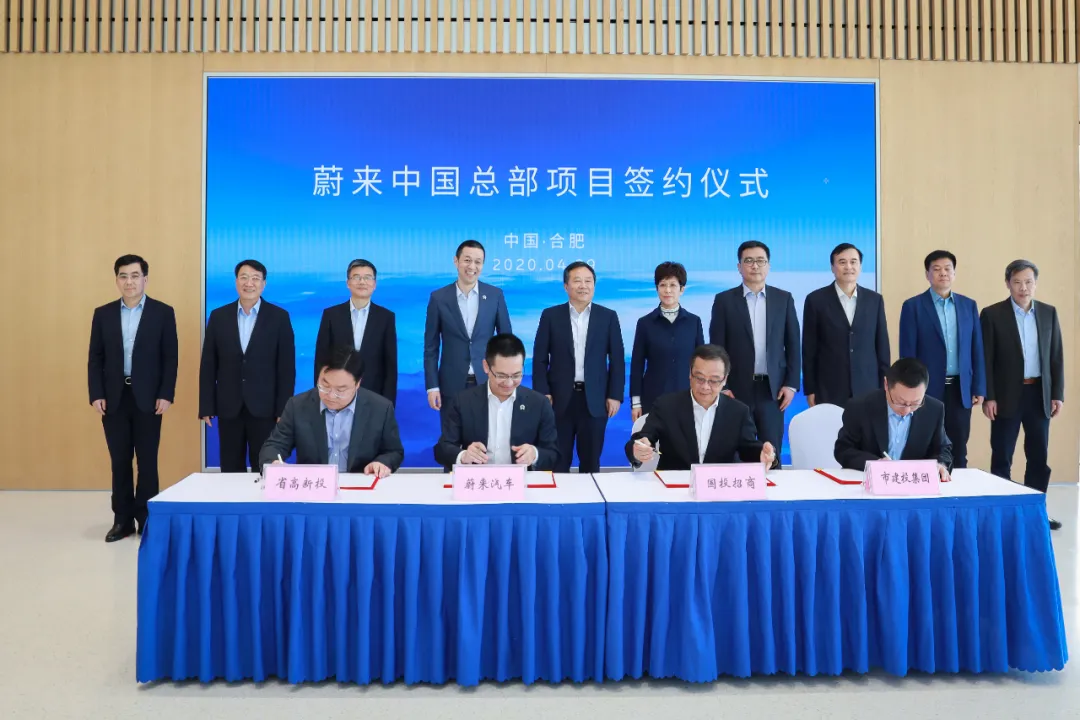
This is a highlight of the NIO-Hefei story: the hometown government takes action to save Li Bin and NIO from the brink of failure. Hefei Construction Investment Holding Group and two other enterprises provided an injection of 7 billion yuan through strategic investment, relieving NIO’s existential crisis.
In fact, Hefei’s move is not surprising. Song Guoqiang said, “After all, NIO is produced in our Hefei.”
NIO also “returns the favor.” Not only did the Chinese headquarters settle in Hefei, but the future expansion of production capacity also has plans to land in Hefei.
In March 2021, NIO and Jianghuai Automobile jointly established Jianglai Advanced Manufacturing Technology Co., Ltd., with JAC holding 51% and NIO holding 49%. This company is equivalent to a declaration of the commitment of the two parties to joint manufacturing and continues the cooperation, which is considered as entrusting the “later life” of the visible future to NIO.
In addition to expanding its joint venture with Jianghuai, NIO will also play more roles in Hefei.
On April 29th, Hefei Xinqiao Intelligent Electric Vehicle Industrial Park officially commenced construction. The planned goals of this industrial park are huge. The total area is 16,950 mu, with an initial investment of 50 billion yuan. The planned capacity is 1 million vehicles per year and 100 GWh of batteries per year, with a total expected annual output value of 500 billion yuan.This industrial park is not only for NIO, but planned jointly by NIO and the government of Hefei. The main body operating the Xinqiao Industrial Park is Jianglai Advanced Manufacturing Technology (Anhui) Co., Ltd.
The industrial park will introduce hundreds of key supporting enterprises, such as chip, semiconductor, motor, battery, conventional automotive components, etc., together with NIO’s own vehicle manufacturing factory to create a complete industry chain from raw materials to complete vehicles.
NIO has become the leading enterprise in Hefei’s intelligent electric vehicle industry.
At the ceremony, Li Bin expressed gratitude to Hefei for its support: “NIO cannot be where it is today without the support of the Hefei government.”
Song Guoquan, who has been transferred to the Vice Chairman of the Standing Committee of the People’s Congress of Anhui Province, was also present at the ceremony.
Old Hefei Model vs. New Hefei Model
There are significant differences between the Hefei during the new energy vehicle demonstration and pilot period and the current Hefei that is challenging national new energy vehicle capitals.
During the previous stage, the Hefei government led the integration of production, education, and research, mobilized users, and created the nationally acclaimed Hefei model around the industrialization and application of new energy vehicles.
Now Hefei is more confident about new energy vehicles and hopes to set higher goals.
On November 13, 2020, Hefei issued the “Implementation Opinions on Accelerating the Development of the New Energy Automotive Industry,” which proposed that by 2025, the entire new energy vehicle industry in Hefei, including vehicle manufacturing, key technologies such as power batteries, drive motors, vehicle operating systems, etc., will reach international advanced levels; highly automated intelligent networked vehicles will achieve commercial application in limited areas and specific scenarios, and new energy vehicles will integrate with transportation, energy, information and communications, etc.; the scale of the new energy vehicle industry will exceed 100 billion yuan, the production capacity of vehicles will reach 1 million, and the quality and brand will have international competitiveness, becoming an important new energy vehicle industry base in the country.
These goals are not simple and clear enough.
On October 22, 2020, the Hefei Municipal Government held an executive meeting to clearly state that Hefei should deeply implement the national strategy of developing new energy vehicles, “conscientiously implement the city committee’s requirements to accelerate the construction of the national capital of new energy vehicles, and push forward vigorously with the production, manufacturing, and use of new energy vehicles in Hefei.”
“National Capital of New Energy Vehicles” is the clear goal.
On the way to achieving this goal, Hefei has already established the “New Hefei Model.”
The leading companies at that time were local companies Jianghuai and Ankai, and now it is NIO and Volkswagen, with a more open outlook and broader vision.
In terms of industrial chain layout, the previous stage aimed to gather the entire industry chain, and now it is upgrading. In response to the central government’s call to enhance the independent and controllable capabilities of the industrial chain and supply chain, Hefei City has initiated key industrial chain “chain leader” system and appointed “chain leaders” in twelve industries. Among them, the “chain leader” for the new energy vehicle and intelligent networked vehicle industry chain is Wang Wensong, member of the Standing Committee of the Hefei Municipal Committee and executive vice mayor.In the field of new energy vehicle technology, despite Anhui’s Hefei having determined the pure electric drive route in 2009, the latest plan has proposed support for fuel cell systems, hydrogen storage and transportation, on-board hydrogen storage, and other technologies, and plans to achieve large-scale operation by 2025.
In the old Hefei model, the government only invested in scientific research funds, purchase subsidies, infrastructure construction, and operation subsidies. In the new Hefei model, the way the government provides investment is different, and state-owned investment companies have become important players.
The 7 billion yuan investment from NIO includes funds from Hefei Construction Investment Holding (Group) Co., Ltd. (hereinafter referred to as Hefei Construction Investment), CITIC Securities Investment Management Co., Ltd., and Anhui Provincial High-tech Industry Investment Co., Ltd. Hefei Construction Investment is a wholly-owned state-owned enterprise of Hefei, and Anhui High-tech Industry Investment Company is a subsidiary of Anhui Provincial Investment Group Holding and a subordinate company of Anhui Province’s state-owned assets.
In the old Hefei model stage, Hefei did not make significant capital investments. Dai Bing believes that this is related to the law of industrial development, “the import period cannot be done so quickly.”
However, today, the new energy vehicle industry has entered the outbreak period. “These internet companies, Huawei, Baidu, Apple, and Xiaomi are all making cars and are getting involved because it has already reached the outbreak period.”
For Hefei, if it had not accumulated during the introduction phase of new energy vehicles, it would not be able to catch up with this wave of dividends during the outbreak period.
In addition to new energy vehicles, Hefei is also accumulating forces to develop the intelligent connected vehicle industry.
For intelligent connected vehicles, Hefei’s approach is to put up a platform to attract enterprises to come, with the infrastructure construction of intelligent connected vehicles as the precursor.
According to the construction plan, Hefei will launch seven major key project constructions in the next two years, including: 5G intelligent connected vehicle public road demonstration area, Hefei Port intelligent transformation, intelligent connected vehicle big data cloud computing platform, new energy charging piles, intelligent connected vehicle closed test field, national intelligent connected electric vehicle quality supervision and inspection center, as well as the 5G intelligent connected vehicle industry development center, with a total investment scale of nearly 4.5 billion yuan.
In August 2020, the 5G intelligent connected vehicle public road demonstration area -Tangxi River 4.4-kilometer intelligent connected vehicle demonstration line in Baohe District has been put into trial operation. This is also Anhui Province’s first 5G automatic driving open road demonstration line. This demonstration line can provide real-world scenarios for enterprises to develop and test vehicle network and 5G application scenarios. Unmanned vehicles from JAC Motors, JAC Volkswagen, Ankai Automobile, and other companies have run on the demonstration line.
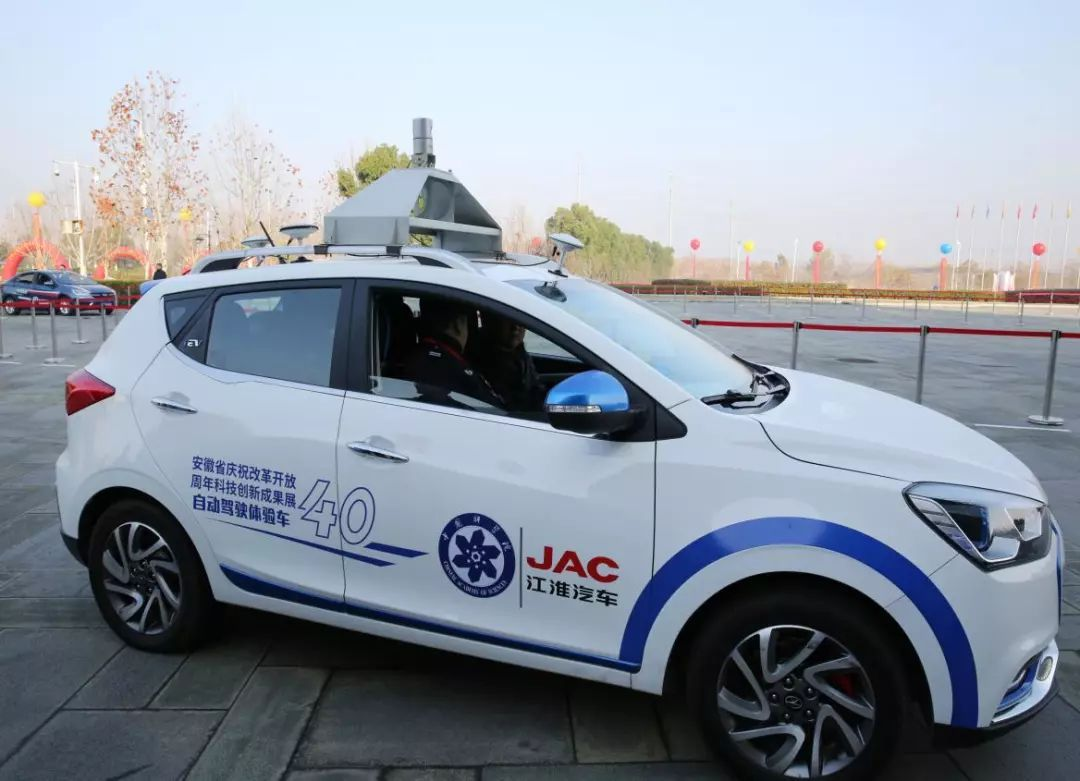 In response to the trend of exploring from new energy vehicles to intelligent connected vehicles in Hefei, the Hefei University of Technology Automotive Engineering Technology Research Institute has taken the lead in constructing two major platforms, the “Anhui Province Intelligent Connected Electric Vehicle Innovation Center” and the “Anhui Province Intelligent Connected and New Energy Vehicle Remote Monitoring and Data Service Center”. Additionally, the “Intelligent Connected Electric Vehicle Quality Inspection and Testing Center (Hefei)”, which aims to become a national-level testing center, will be led by the Baohu district government for establishment.
In response to the trend of exploring from new energy vehicles to intelligent connected vehicles in Hefei, the Hefei University of Technology Automotive Engineering Technology Research Institute has taken the lead in constructing two major platforms, the “Anhui Province Intelligent Connected Electric Vehicle Innovation Center” and the “Anhui Province Intelligent Connected and New Energy Vehicle Remote Monitoring and Data Service Center”. Additionally, the “Intelligent Connected Electric Vehicle Quality Inspection and Testing Center (Hefei)”, which aims to become a national-level testing center, will be led by the Baohu district government for establishment.
The intellectual support from the Hefei University of Technology has entered the third stage: monitoring, testing and data platform for intelligent connected vehicles.
The “Capital of New Energy Vehicles” is within reach. Although it is unclear whether Hefei’s goals can be achieved, there are indications that Hefei is the leader in the competition among cities in its development of intelligent connected vehicles.
Why Hefei?
Many provincial capitals are not well liked by their brother cities within the province.
Hefei is no exception. The people of Anqing feel it is not right and that Hefei took away their position as the provincial capital. The people of Wuhu are not happy either, as they believe that Hefei was not as economically developed as Wuhu.
Indeed, when Anhui province moved its capital from Anqing to Hefei in 1952, Hefei was just a small city with just over 50,000 people.
However, Hefei’s development has been exceptionally rapid. “The last 20 years should be the fastest period of development for Hefei,” says Dai Bing.
GDP is an effective indicator of Hefei’s strength. From 2009 to 2019, Hefei’s GDP increased by 347.61%, which ranks first among all key cities in China. In 2020, among the top ten economic powerhouse provincial capitals, Hefei ranked ninth.
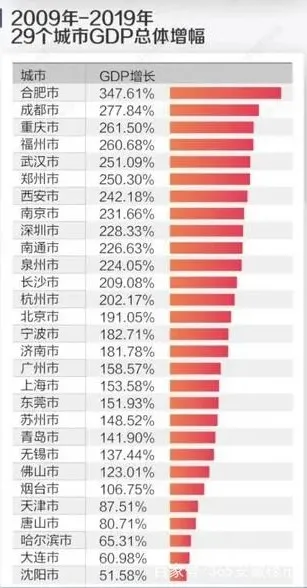
Today, Hefei is a force to be reckoned with in Anhui; and when looking across the country, Hefei can stand tall. The opportunities in the field of new energy vehicles and intelligent connected vehicles give Hefei a bright future, which is enviable.
Why has Hefei achieved such growth?
Let’s start with a small question. Why did Hefei dare to invest 7 billion yuan in NIO?
In fact, looking back at Hefei’s history of investment promotion, 7 billion yuan is just a “small amount of money.” In September 2008, when the local fiscal revenue of Hefei was only 16 billion yuan, Hefei promised to provide 9 billion yuan in funding, offer a series of policy preferences, and invest 17.5 billion yuan jointly with BOE in building the first domestic 6th generation line of liquid crystal displays. Hefei was forced to stop the construction of the subway system due to the need to raise funds.
“The city could not come up with 3 billion yuan in cash, so we, the Hefei State-owned Investment and Development Co., and the new station each contributed half of it.” Here, “we” refer to Hefei Jian Investment, which is also a NIO investor.The investment from Hefei turned the tide for BOE, a so-called “burning money machine,” which subsequently built an 8.5 generation line and 10.5 generation line – transforming itself into a global leader in LCD panels. BOE’s return to Hefei was also very fruitful: investing over 100 billion yuan, having over 20,000 employees, and an annual output value of over 40 billion yuan.
Beyond the BOE project, Hefei’s astonishing investments are in chip-making. In 2016, Hefei Chant Group, in cooperation with Beijing-based Unisplendour Corporation Limited, launched the Changxin Memory Technologies dynamic random-access memory (DRAM) chip project-the largest single investment made by Anhui Province, totaling 150 billion yuan.
In October 2017, Hefei Construction Investment Holding and Taiwan’s Powerchip Semiconductor Corporation formed Heifei Jingce Integrated Circuit Company, a joint venture with a total investment of 12.8 billion yuan.
In order to introduce more industries, Hefei Construction Investment Holding also acquired Sansi Semiconductor, spending $1 billion US dollars to become the largest shareholder. However, since the industry has not taken root, it has become a financial investment.
Most of these significant investments have bore fruit; with integrated circuits, represented by Changxin and Jinghe, taking root, growing, and branching out in Hefei, and expanding to nearly 280 companies.
“State-owned asset management platforms exist in many local governments throughout China, just like in Hefei. Of course, this is not venture capital. Instead, it is based on existing market demand and reserves from existing industries,” said Dai Bing. “Because Hefei previously invested in these two large projects and gained experience, it was able to make a more accurate judgment regarding NIO”.
To the locals of Hefei, these large-scale investments are not considered gambling or venture capital.
Dai Bing recalls that after Hefei became a hotspot for new energy vehicles, many people approached them with projects to build, demanding high funding and favorable policies. However, the discerning leadership of Hefei and relevant departments avoided many potential pitfalls.
The reason is simple. Hefei holds project evaluation meetings, inviting experts from universities such as Hefei University of Technology and China University of Science and Technology, as well as executives from JAC Motors and Ankai Automobile to evaluate the authenticity and feasibility of the projects. “JAC Motors and other companies are relatively down-to-earth,” Dai Bing said, and being pragmatic in doing work, not being hasty, and thus makes a more accurate judgment on the industry.
If we trace Hefei’s intellectual roots in the fields of new energy and smart connected vehicles, we must also look back to universities such as Hefei University of Technology and The University of Science and Technology of China.
Apart from the talent that Hefei University of Technology has supplied to the automotive industry, the existence of the University of Science and Technology of China has turned Hefei into one of the highlands for scientific research and innovation in China, and laid the foundation for the development of high-tech industries in Hefei. Many alumni of USTC are prominent figures in the hottest sector of artificial intelligence.
“More than half of the well-known domestic artificial intelligence start-up companies or unicorn companies are graduates of USTC,” Dai Bing said.The partner and president of the New Energy Vehicle Sub-fund of the National Science and Technology Achievement Transformation Guidance Fund, and former general manager of Hefei Guoxuan High-tech Power Energy Co., Ltd., Fang Jianhua, summarized the Hefei’s development model in high-tech industries as “original innovation-achievement transformation-seizing the commanding heights of industry-exponential growth.”
He wrote: “It is the symbiotic and collaborative innovation of several decades between Hefei and the University of Science and Technology of China that has enabled Hefei’s innovative and developmental genes to emerge step by step, and to seize opportunities in every round of scientific and industrial revolutions.”
After decades of promoting education and encouraging innovation, today we see the flourishing achievements of our efforts.
Hefei is on its way to becoming a hub for the new energy and intelligent connected vehicles industries, with its blueprint gradually unfolding.
While Professor Zhao Han has retired, Pan Yishan and other masters and students of Hefei University of Technology continue to research and develop electric and intelligent technology for industrialization. Xia Shunli will lead Jianghuai to return to the mainstream of new energy car companies. NIO and Volkswagen are investing in research and development, as well as building factories in Hefei.
Hefei’s past is only a prologue. As Dai Bing said, “the current production and sales scale of Hefei’s new energy vehicles is just the tip of the iceberg,” as stated by the Secretary of the Hefei Municipal Party Committee and Standing Committee of the Provincial Party Committee of Anhui Province, Yu Aihua.
This article is a translation by ChatGPT of a Chinese report from 42HOW. If you have any questions about it, please email bd@42how.com.